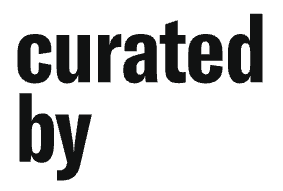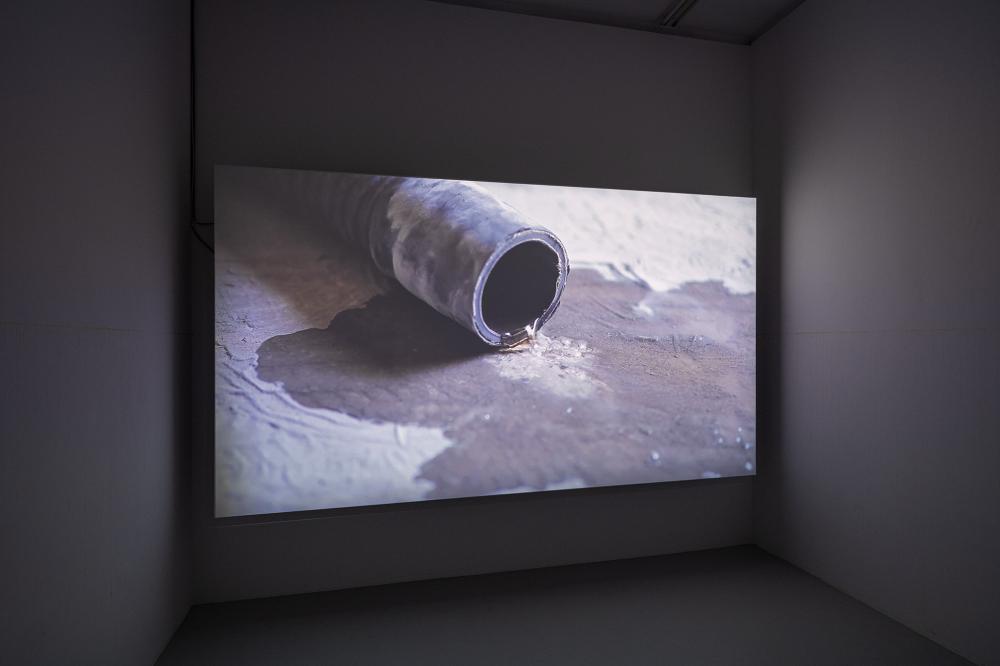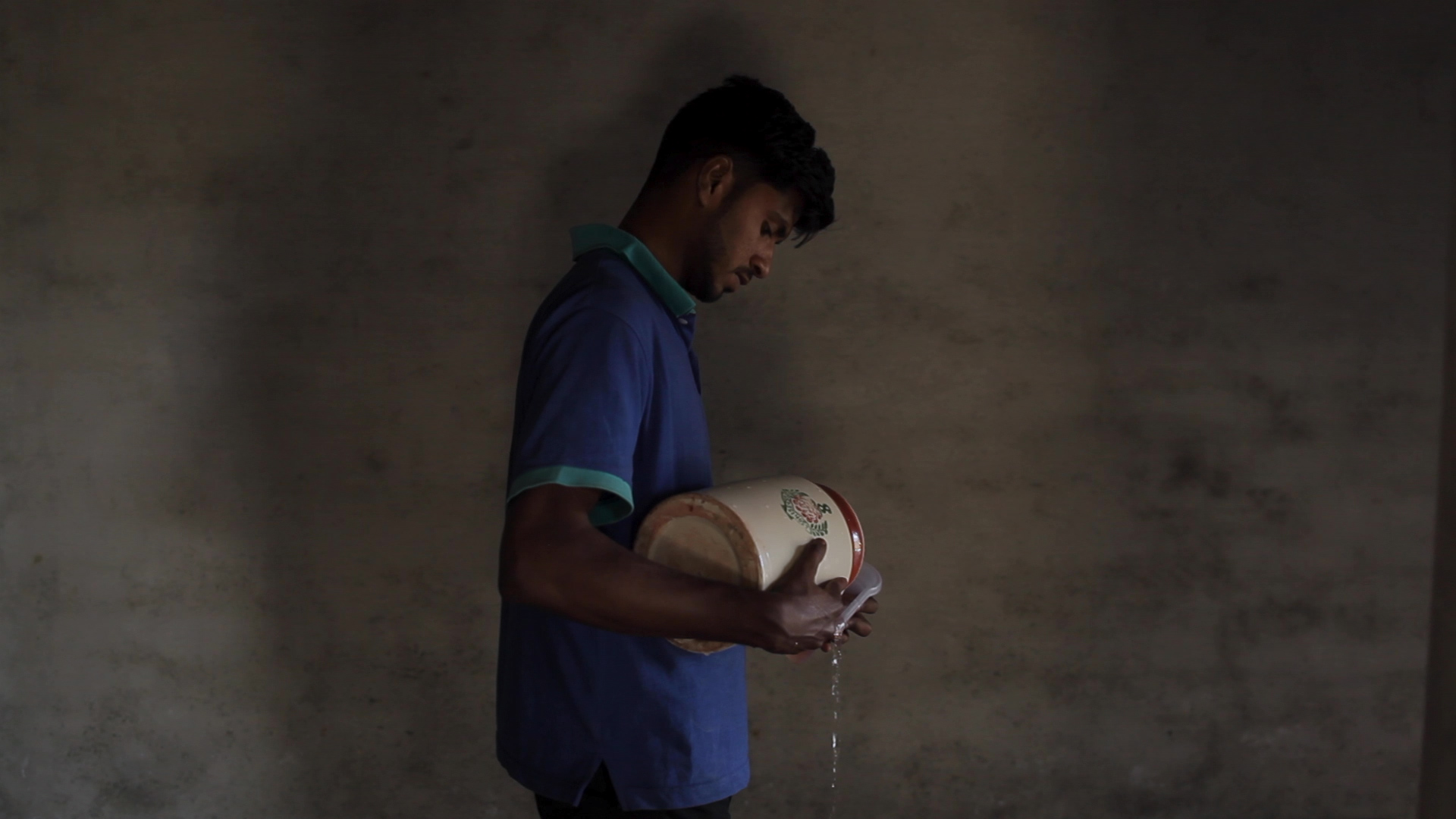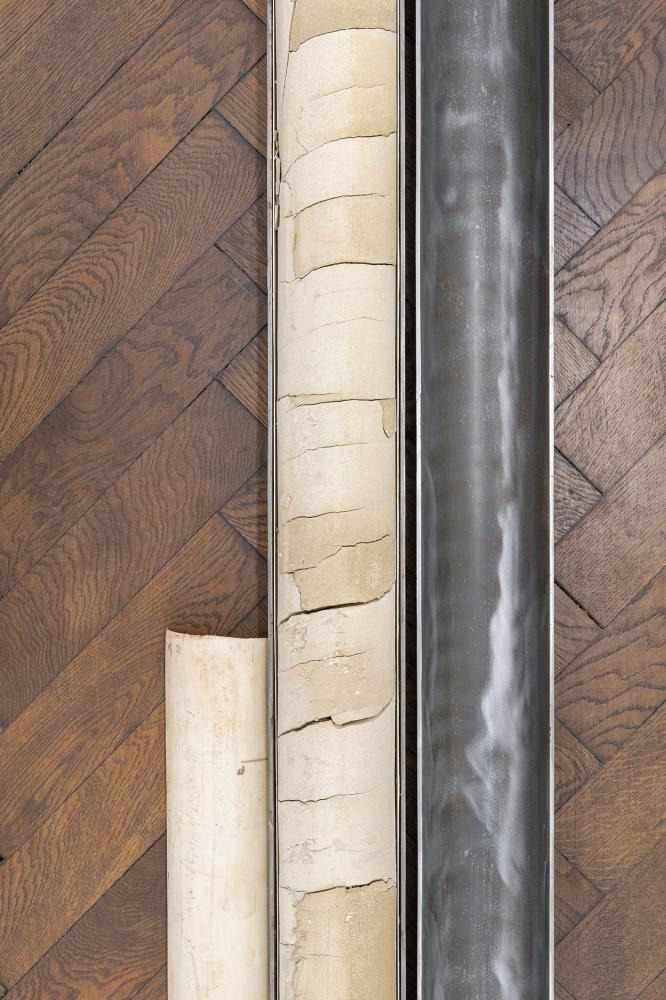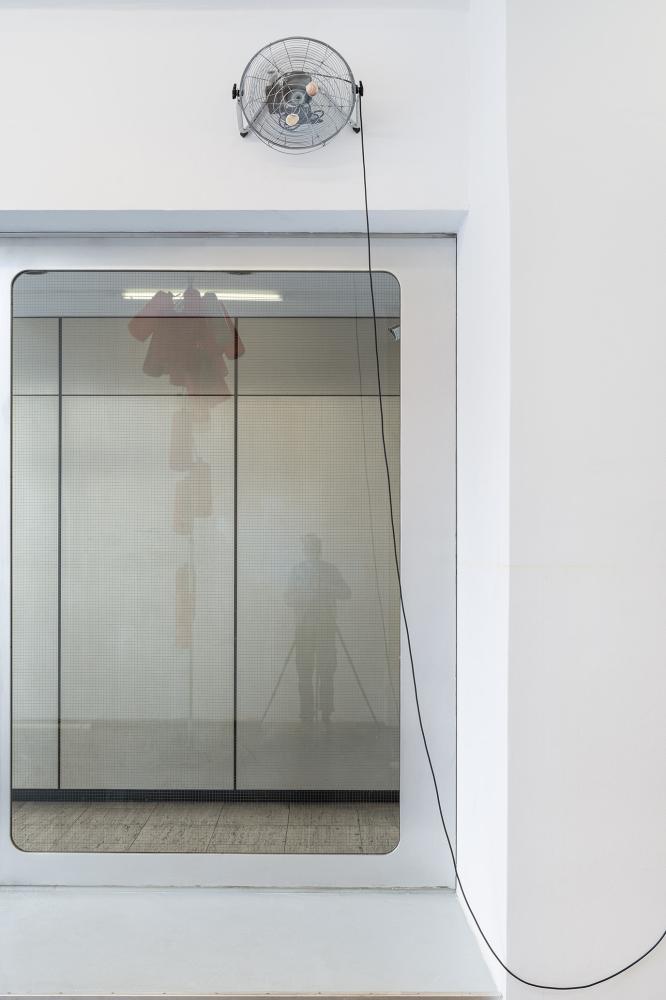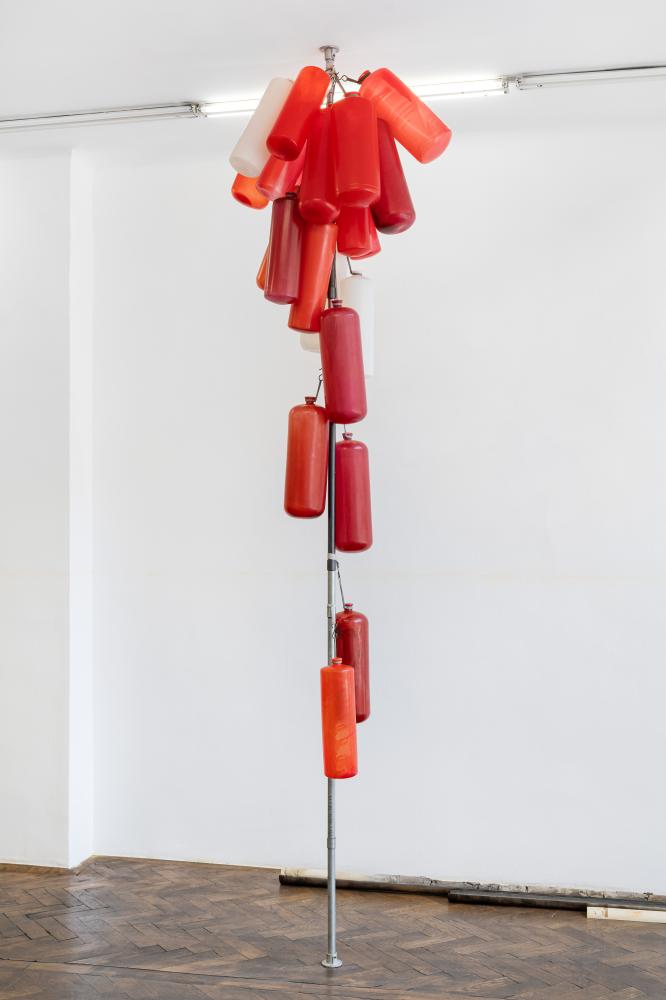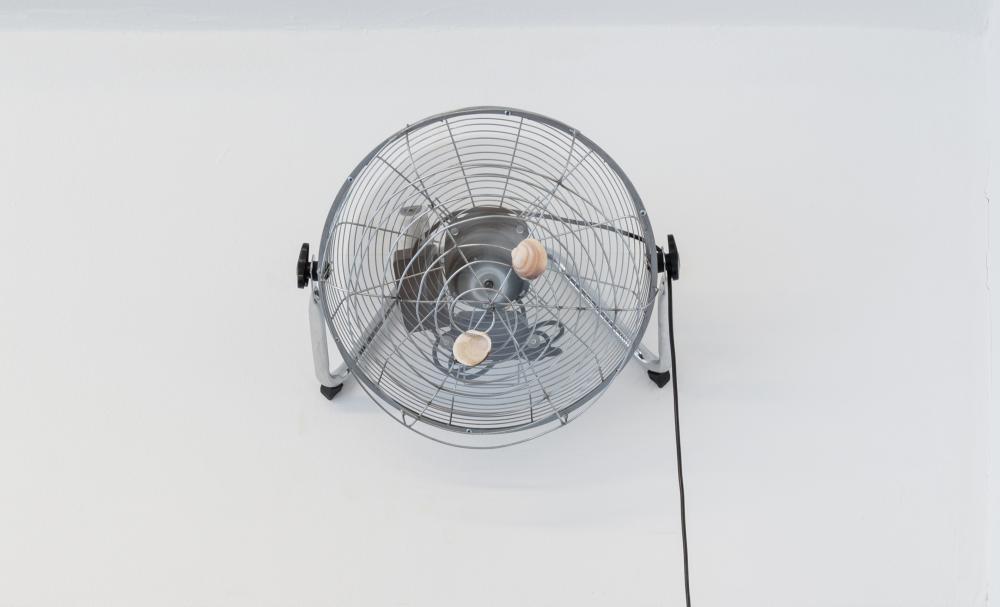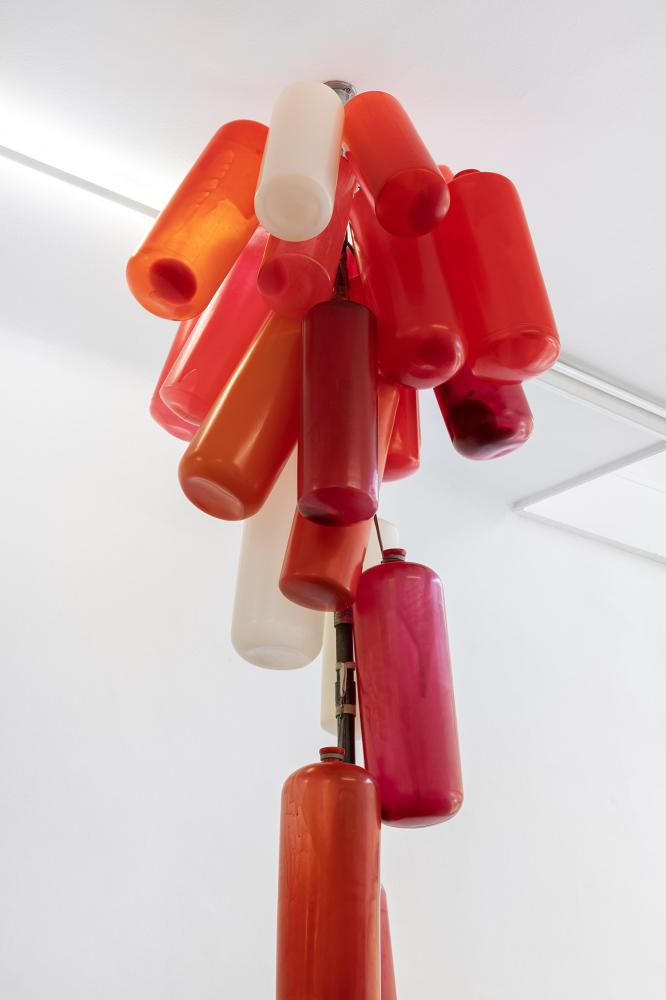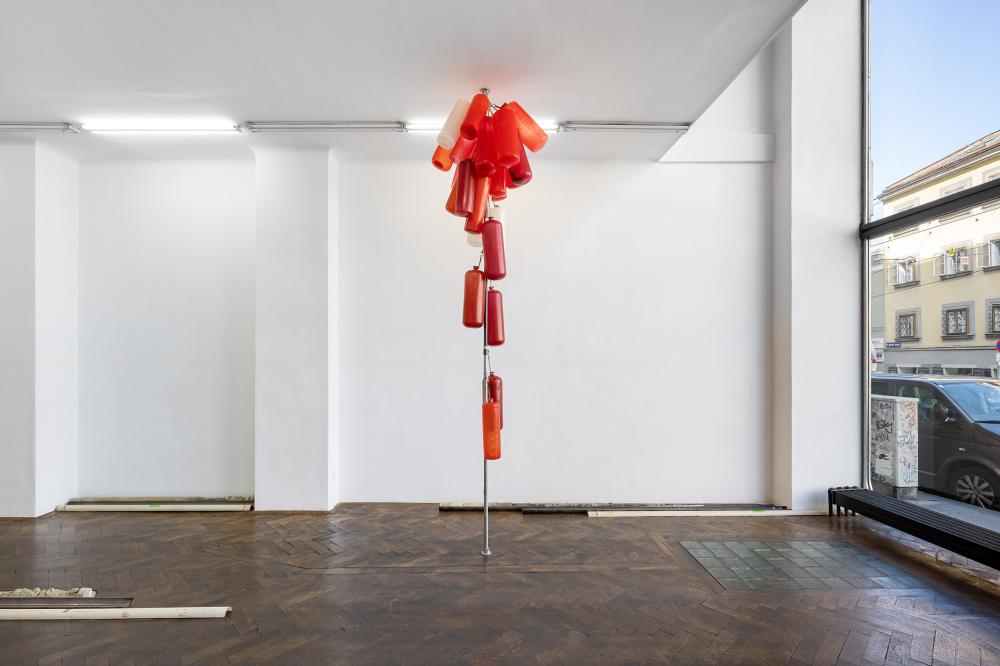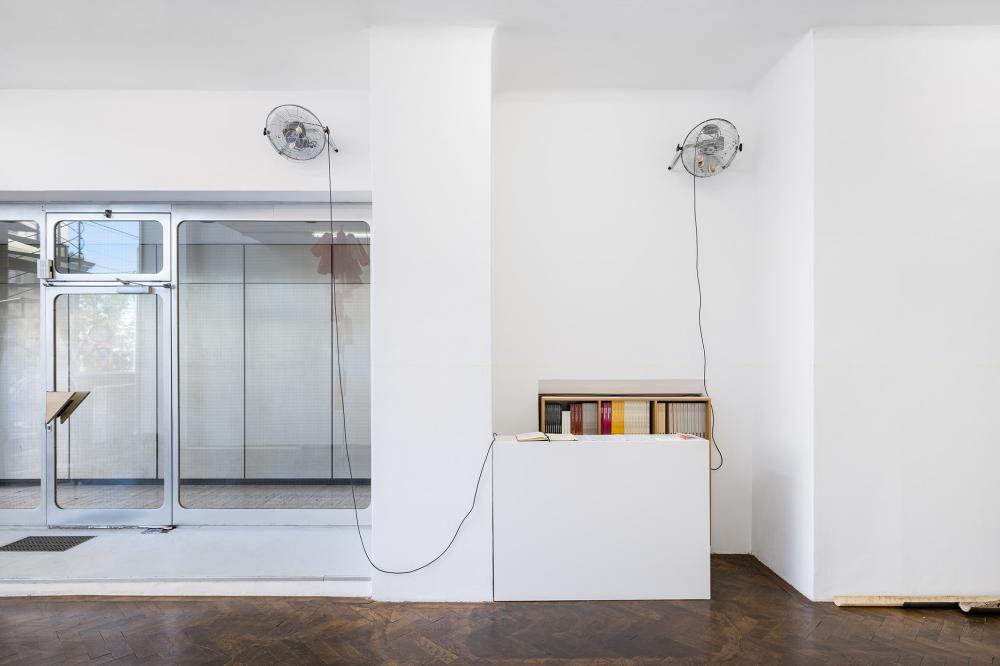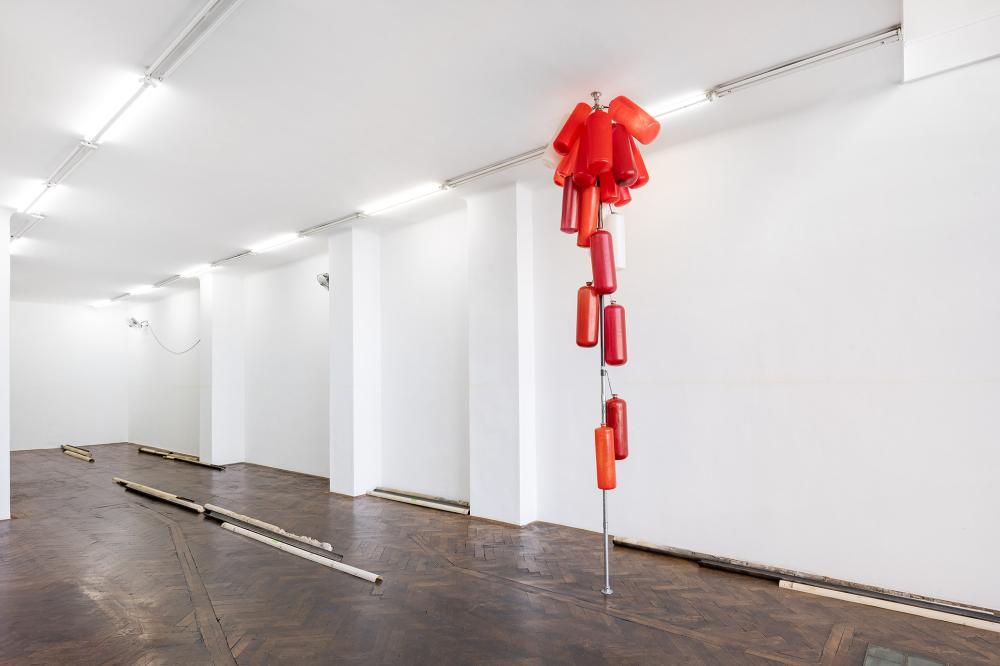Galerie Hubert Winter curated by Alessandro Rabottini
„Water being washed away“

www.galeriewinter.at
Curator(s):

Currently holding the role of artistic director at Fondazione In Between Art Film, Alessandro Rabottini is an art critic and curator who lives in London. For the Fondazione, he recently curated, together with Leonardo Bigazzi, the group exhibition “Penumbra” at the Complesso dell’Ospedaletto in Venice on the occasion of Biennale Arte 2022. He also initiated STILL - Studies on moving images. Rabottini has curated exhibitions in museums and institutions including the group exhibition "Afterimage" at MAXXI L'Aquila (co-curated with Bartolomeo Pietromarchi); Robert Overby’s retrospective at Center d’Art Contemporain, Geneva (which traveled to GAMeC, Bergamo; Bergen Kunsthall and Le Consortium, Dijon); solo exhibitions by John Latham and Gianfranco Baruchello at Triennale, Milan; Elad Lassry and Adrian Paci at PAC, Milan; Danh Vo and Victor Man at Villa Medici, Rome; Walid Raad and Ettore Spalletti at MADRE Museum, Naples; Keren Cytter, Latifa Echakhch, Giuseppe Gabellone, David Maljkovic, Tim Rollins & KOS, Sterling Ruby, Tris Vonna-Michell, and Jordan Wolfson at GAMeC, Bergamo. Rabottini contributed to museum catalogs on the practices of artists such as Uri Aran, Cecily Brown, Dana Schutz, Piotr Uklański, and Paloma Varga Weisz, among others. From 2017- 2020 he was artistic director of miart - International Fair of Modern and Contemporary Art in Milan.
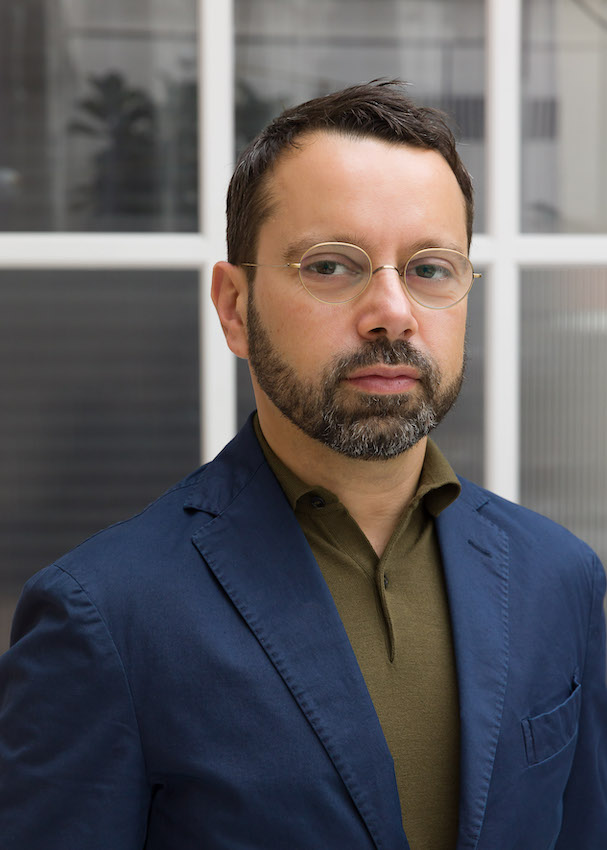
Artist(s):
-
Basir Mahmood MoreBasir Mahmood (b. 1985) graduated from Beaconhouse National University in 2010, he has participated in artist residencies in five different countries, including, Akademie Schloss Solitude in Stuttgart, Germany (2012) and the prestigious Rijksakademie van Beeldende Kunsten in Amsterdam (2016-17). Mahmood has received accolades from around the world for his work, including Emerging Artist Award SAI Harvard University, USA (2015), Stipendium for Established Artists, Mondriaan Fonds (2018-22), Paulo Cunha e Silva Art Prize (2020) and Ammodo Tiger Short Award, Film Festival Rotterdam (2021). Finally, Mahmood remains an academic who teaches, delivers talks around the globe, and has served as Curator of Stedelijk Museum Video Club x IDFA, Amsterdam, Netherlands, in 2018.
-
Latifa Echakhch MoreLatifa Echakhch was born in 1974 in El Khnansa, Morocco; she lives and works in Switzerland. Recent solo shows include the Swiss Pavillion, 59th Venice Biennale, Venice (2022), Kunsthaus Baselland, Basel (2022), Swiss Institute, Rome (2021), Kunsthalle Mainz (2019) and Fondazione Memmo, Rome (2019). Group shows include GAMeC, Bergamo (2022), Museum of Contemporary Art, Chicago (2021), Centre Pompidou, Paris (2020), Red Brick Art Museum, Beijing (2019), Arsenal Contemporary, New York (2018). Her work can be found in various public collections such as the Museum of Modern Art, New York and Centre Pompidou, Paris.
-
Phillip Lai MorePhillip Lai lives and works in London. Recent solo exhibitions include Modern Art, London (2021), Galleria Franco Noero, Turin (2019), Kiang Malingue, Hong Kong (2018) and Camden Art Centre, London (2014). Group shows include Goldsmiths CCA, London (2022), The Hepworth Wakefield, Wakefield U.K (2018), John Hansard Gallery, Southampton U.K (2015), Nottingham Contemporary, Nottingham U.K (2014).
-
Giorgio Andreotta Calò MoreBorn in Venice in 1979. Calò lives and works between Italy and the Netherlands. He studied sculpture at the Academy of Fine Arts in Venice and at the Kunsthochschule Berlin, graduating in 2005 with a thesis about Gordon Matta-Clark. Between 2001 and 2007 he was assistant to Ilya and Emilia Kabakov. In 2008 he moved to the Netherlands where he was artist in residence at the Rijksakademie van Beeldende Kunsten in Amsterdam (2009-2011). In 2011 Calo’s work has been presented at the 54th International Art Exhibition of the Venice Biennale directed by Bice Curiger. In 2012 he won the Premio Italia for contemporary art promoted by MAXXI Museum in Rome with the work Prima che sia notte (Before night falls). Between 2012 and 2013 he has been artist in residence at the Centre National d’Art Contemporain in Villa Arson, Nice, France. In 2014 he won the Premio New York, sponsored by the Italian Ministry of Foreign Affairs. In 2017 Calò is one of the three artists invited to represent Italy in the pavilion curated by Cecilia Alemani under the 57th International Art Exhibition, the Venice Biennale. With the project Anastasis, in 2017 he won the second edition of the Italian Council grant awarded by the MiBACT (Italian Ministry of Culture), which supported the monumental installation realized in 2018 at the Oude Kerk in Amsterdam. In 2019 he realized the exhibition CITTÀDIMILANO at Pirelli HangarBicocca.
-
Claudia Pagès Rabal MoreClaudia Pagès Rabal (Barcelona, 1990) has done readings, performed and exhibited in Vleeshal, Middelburg (2022), MACBA, Barcelona (2021); Kunstverein Braunschweig (2021); La Casa Encendida, Madrid (2021, 2016); HAU2 & CreamCake, Berlin (2019), Sharjah Art Foundation, Sharjah UAE (2018); among others. Pagès has published books with Onomatopee (2020) and is preparing a new book with Wendy’s Subway (2022). In their latest works, Pagès has focused on the logistics system and its link to jurisdictional language, both operating in the verbal tense of a non-finite and violent gerund that has direct effects on bodies. Pagès’s artistic research addresses circulation and maintenance and their role in sustaining the status quo. The continuity of certain systems and institutions is maintained through what Pagès calls the “immobility of stable circulations” and “containment architectures” that uphold power through specific flows of goods, capital and value within a suspended and capturing present.
Exhibition text
More
The group exhibition Water Being Washed Away brings together works that use dynamics or images of liquid infiltration as political and existential metaphors. Through different forms of erosion that are material and symbolic, the exhibition establishes a dialogue between artists who look at how physical, cultural, and biographical positions of distance can question and nuance the idea that aesthetic and political lineages are stable notions, fixed in time and in behaviour.
Following the different ways in which fluids are referred to in the works by Giorgio Andreotta Calò, Latifa Echakhch, Phillip Lai, Basir Mahmood, and Claudia Pagès Rabal, the show metaphorically infiltrates the cultural and economic structures of everyday objects together with our psychological understanding of them. By bringing the works into close proximity with each other, the exhibition layout aims at taking the viewer across a landscape of associative leakages between permanence and deterioration, belonging and estrangement, often collapsing the distinction between the authentic and the fabricated.
The artists operate within a porous circulation and distribution of materials and meanings, relaying them according to a personal methodology that consumes and transforms moments and fragments of reciprocal interpretation between the East and the West, the South and the North.
French-Moroccan artist Latifa Echakhch (1974, lives between Vevey and Martigny) imbues a personal dimension into her spatial and architectural interventions, often questioning ideas of identity and nationality within a globalized context. For this exhibition, the artist recreated Gaya (E102) Horizon, a site-specific installation originally conceived in 2010 that subtly infiltrates the architecture beyond its almost imperceptible visual presence. The work consists of a horizontal yellow line that stretches on all the gallery walls. It is made of a cheap, flavourless food colouring commonly used in North Africa to visually simulate the more expensive saffron and here diluted with water to create a minimalistic dripping, the residual horizon of the artist’s cultural context of origin. In its hieratic simplicity, Gaya (E102) Horizon deploys a synthetic material whose function is to visually dignify food and, in so doing, suggests a multitude of meanings: it interrogates concepts of authenticity and belonging while asserting the scale with which the unseen and the unheard innervates societies. By running throughout the entire exhibition space, the work also functions as the eroded foundations for the narrative of the show: if saffron, in fact, is a cultural signifier that has permeated many cultures through time, the work itself permeates the skin of the architecture, for when the show will be over and the walls will be painted again, it will be kept there as a secret.
Interested in processes of material and formal abstraction, the sculptures by Kuala Lumpur-born, London-based artist Phillip Lai (1969) bear a resemblance to ubiquitous, industrial objects that the artist may have found or purchased but that, instead, he has often recreated. Prosaic objects like receptacles and vessels are analytically dissected throughout a sculptural process that finally restores them in their complex, silent self-evidence. Lai works by partial fictionalisations of the chosen objects, and that operation becomes most visible in their often enigmatic assemblage or morphological distortion. Expulsions (2019) is a series of steel pipework joined together which bears an accretion of red, white, and bright orange bottles hanging from its top. The latter are meticulously and manually cast in a translucent, fragile polyurethane resin and ambiguously resemble pressurized containers, like diving oxygen tanks or fire extinguishers. In their essence and position, these flasks suggest differing narratives of loss and retention: a sense of latent alarm, a collective collection of provisions, and the vigilant waiting of a multitude.
Through her multi-media practice, Spanish artist Claudia Pagès Rabal (1990) often fuses personal memories with a wider concern for environmental and socio-political issues. Ventiladors, petxines (sur) (2022) is a spatial and sculptural intervention that, in its discreet minimalism, borders with an apparent functionality. A series of fans are distributed in the gallery space: they were customized by the artist who welded the lids with spiral shapes and then encrusted them with shells collected over the years on the beaches of Tarragona. Each fan is equipped with a system that distributes different essences: bougainvillea, oleander, cement, and wet sand. Together, they evoke the Mediterranean coasts and the diverse implications that travel trajectories and maritime landing may have: the sea as a space of leisure, as a network of exchanges of goods, as a horizon of conflicts, hopes, and migrations. Using shells that are disappearing from the progressively eroded Spanish coasts, Pagès Rabal composes an olfactory and acoustic landscape that is as dematerialised as the maritime routes and pervasive like the immaterial forces that shape memories and existences.
Through their multi-media practice, Spanish artist Claudia Pagès Rabal (1990) often fuse personal memories with a wider concern for environmental and socio-political issues. Ventilators, petxines (sur) (2022) is a spatial and sculptural intervention that, in its discreet minimalism, borders with an apparent functionality. A series of fans are distributed in the gallery space: they were customized by the artist who welded the lids with spiral shapes and then encrusted them with shells collected over the years on the beaches of Tarragona. Each fan is equipped with a system that distributes different essences: bougainvillea, oleander, cement, and wet sand. Together, they evoke the Mediterranean coasts and the diverse implications that travel trajectories and maritime landing may have: the sea as a space of leisure, as a network of exchanges of goods, as a horizon of conflicts, hopes, and migrations. Using shells that are disappearing from the progressively eroded Spanish coasts, Pagès Rabal compose an olfactory and acoustic landscape that is as dematerialised as the maritime routes, and as pervasive as the immaterial forces that shape memories and existences.
In a poetic parallel, Italian artist Giorgio Andreotta Calò (1979, lives in Italy and the Netherlands) composes conceptual landscapes from the relics of natural elements, architectures, and cities, revealing their dormant or imaginary aspects. His Carotaggio (Venezia) (2014) consists of a series of vertical borings from the Venetian lagoon, where the artist was born. The core drilling that he requested to perform reached the layer called “Caranto”, located at a depth of nine meters and which marks the passage between Pleistocene and Holocene within the Venetian stratigraphic sequence. This layer separates the lagoon water from the freshwater subsoil and it functions as the backbone of the floating city, whose monumentality rests on a daily dynamic of infiltration. With its horizontal arrangement of solid and yet precarious stilts, the installation forms a dry island that in its shape and materials stands for the abraded foundations upon which Venice is built: an eroded horizon of accumulated matters and dislocated fragments of time that manifest thousands of years of geological and urban transformations.
The exhibition culminates in the work that actually originated the curatorial concept, meaning Ahmedpur East (2022) by Pakistani artist Basir Mahmood (1985), who uses video and photography to explore the aesthetic and political aspects of everyday life. The almost forensic yet melancholy quality of his video works is enhanced by the process of their making, with the artist often sending instructions to film crews in Lahore from his current home in Amsterdam where he then edits the filmed material. In Ahmedpur East, a brown liquid is seen either vigorously coming out from a hose, or delicately being poured from a vase into a tray. Contemplative and menacing at the same time, the work attempts to create a memorial for the 219 people that died engulfed in a fireball while trying to collect the fuel that spilled out from a crashed oil tank in Ahmedpur East. Mahmood asked a group of gas station workers to fill a series of household containers (like those used by the victims) and had them filmed within a construction site, composing a wordless elegy of solemn gestures and flowing sounds. Here the dynamics of the liquids and the alternating orchestration of dispersion and pouring sublimate the violence of the event while building the tension of a sober remembrance.
Text by Alessandro Rabottini in collaboration with Bianca Stoppani

